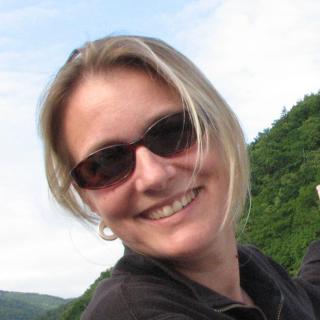The Burke Museum’s new exhibit, Elwha: A River Reborn, was designed with kids in mind. Enter into a quiet space filled with watery light and sound. There you will discover historical images, thoughtful words and million-year old fossils. It’s the beginning of a beautiful and fascinating story of a river, fish, a dam and a people determined to bring the river and the fish back.
But will your kids be engaged? Round the corner and find … a research tent! “Camp Elwha” is set up with a camping table, fake food, tin plates, microscopes and test tubes. The camp even smells like a cedar forest. Beyond the tent, a series of tables are set up to guide kids through interactive activities that teach science and explore the Elwha River story.

The Northwest’s Elwha River Valley on the Olympic Peninsula is the site of the largest dam removal project ever undertaken. As such, it is an unprecedented experiment in restoration and renewal. The Burke Museum's exhibit, based on the book by Seattle Times reporter Lynda Mapes and photographer Steve Ringman, explores the river's groundbreaking history through first-person accounts, amazing photographs and Burke collections.

For kids who just need a little nudge to review the exhibit independently, there are laminated photo scavenger hunt lists and a themed crossword puzzle. Table activities on sediment and ecosystem structure encourage visitors to sit down, think, play and learn. A computer station is available for browsing photos and Elwha River websites. And, there’s an entire table covered with clipboards and colored pencils that is dedicated to scientific illustration – helping spotlight the connection between science and art that pervades the exhibit and the entire museum, even for the youngest visitors.

Toward the back of the exhibit is a display of the awe-inspiring biodiversity found in and around the Elwha River. An Olympic torrent salamander, found only on the Olympic Peninsula, hangs in a large jar along with other amphibian and fish specimens. Tiny vials display 96 species of insects and other invertebrates. Stuffed mammals on display include a spotted skunk and a row of little shrews, and rare birds such as the marbled murrelet.
Wildlife is not the only thing that’s diverse in this exhibit - notice how many different types of scientists are represented? Projects of this scale require a huge collection of expertise. You and your kids will see photos, video clips, and equipment highlighting botanists, salmon biologists, geomorphologists and many more. One display describes, for example, how scientists embed microchips in painted rocks to study movement of the river bed. A video portrays scientists snorkeling in the river to count fish. The invaluable role of community activists and tribal leaders is highlighted through quotations painted on the wall.

A tremendous amount has been accomplished to restore the Elwha River. With all the doom and gloom in environmental news, it’s exciting and inspiring to witness and explore great environmental accomplishments. Hopefully your kids will also leave with a sense of how much is still left to do and of how unique this amazing project really is. After visiting, they will wait with the world to see the sediment move downstream, the forests grow along the river and the salmon return to prosper.
More at the Burke
Don’t forget all the other fun exhibits at the Burke Museum:
- There’s a 12,000-year-old giant ground sloth found at SeaTac and a cast of a 10,000-year-old mastodon in “Life and Times of Washington State.”
- Recordings of tribal elders and artifacts from 17 Pacific Rim cultures are on display in “Pacific Voices.”
- Nosh at the wonderful, wood-paneled café in the basement. It simply serves pastries and drinks but the academic atmosphere is perfect.
- Right outside the door is the University of Washington campus – perfect for running, exploring and nature photography on a nice day.
More Elwha adventures
- The best place to go to learn more about the Elwha River is, of course, the Elwha River. The National Park Service provides a brochure highlighting the river restoration project and area opportunities to learn more.
- If you can’t get to the river, visit the Lower Elwha Klallam Tribe’s website with live webcams. The site is full of gorgeous photographs and interesting details about the river and the restoration project.
- Because the connection of native peoples to their river is such a highlight of this exhibit, curious kids might enjoy learning more about other native peoples and their connections to other rivers. The Duwamish Longhouse, for example, overlooks the Duwamish River Valley in Seattle.
If you go …
Where and when: Elwha: A River Reborn is at the Burke Museum until March 9, 2014. The exhibit was developed by the Burke Museum of Natural History and Culture in collaboration with The Seattle Times, Mountaineers Books, and the Lower Elwha Klallam Tribe.
The museum is open daily from 10 a.m.-5 p.m.
Tickets: The exhibit is included in admission. Adults are $10; kids 5 and older and students are $7.50; seniors are $8. On the first Thursday of each month, admission is free and the museum is open until 8 p.m.
Age recommendation: This is a small exhibit but it really is designed to engage kids. There’s play food for the very young. The really engaging student activities are nicely designed for a range of ages; kids from 6-12 should find an activity to enjoy and learn from.
About the author: Ashley Steel and Bill Richards, Seattle-based parents and writers, recently published Family on the Loose: The Art of Traveling with Kids. Their book aims to expand cultural horizons and cultivate a generation of global citizens through travel. Their blog can be found at Family on the Loose. (Bill collaborated on Ashley's story.)




